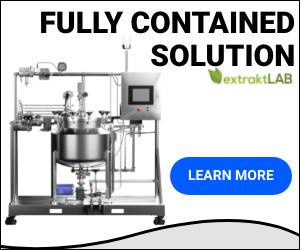Hemp Oil Processing
The hemp oil market has burgeoned recently in the US and has found itself competing with traditional indoor grows for CBD production. Mobile and stationary oil production facilities are now being built all over the world to deal with growing CBD demand.
There are several peculiarities about hemp extraction that warrant exploring. Both indoor and outdoor approaches can produce large amounts of CBD oil and both have unique requirements and associated costs.
The most striking difference between indoor vs. outdoor is that there is no perpetual planting and harvest with an outdoor grow. Just one big honking planting/harvest that requires big planters/harvesters, big processing equipment, big storage facilities, big inventory, and big everything else.
Both indoor and outdoor are laborious. In terms of processing, because the biomass is so voluminous, it is also important to be able to processes large amounts quickly and with high throughput.
Throughput vs Volume
There is a common misconception in the industry that larger volume extractors will give higher throughput.
Is this true? You make the decision: In reality, larger equipment requires major infrastructure, lots of power, significant square footage, and requires special installation equipment such as a crane.
Furthermore, the equipment is typically quite loud. Large diameter extraction columns generally give poor mass transfer and channeling within the tank is horrible. Other scientific fundamentals are completely ignored by the purveyors of large equipment and if properly understood, would inform a completely different approach.
A better engineering approach takes into account the science of extraction and indicates smaller machines with more frequent changeovers. If you do the math, these systems will outperform larger systems by factors of 10x or more.
For example, extraktLAB® recently introduced its 80L supercritical CO2 extraction system that can output approximately 600g/hr of oil on 12% material. This vs. a typical 100L system that will do 50-60 g/hr.
80L Extractor Outperforms on Footprint, Energy, and Throughput

You will need an additional 12 ft square for the chillers which are not on board this unit like with the 110+ unit. You can have the chillers in a different room or place them next to the unit. You can compare this to the large room + large utilities room you need for a 100L.
If you have ever had occasion to stand next to an operating 100L system, you immediately notice the noise level. With our 80L, you could run it in your office and still have a call on the phone. The machine is quiet.
In terms of a compressor, the 80L machine can use a bottle of compressed air or a small pancake compressor that you can obtain from Home Depot. The compressed air runs the valves. In contrast, large and loud three phase compressors are used with most 100L systems.
In terms of portability, this system can be rolled into a trailer. You will need a 200 amp, three-phase generator available from many different purveyors at reasonable costs. If required, we offer single phase units. These generators can also be rented.
Here is a comparison chart showing some of the similarities and differences between our different models of extractors:
| extraktLAB® MODEL | 100 | 110+ | 140 | 180 |
| General | ||||
| Footprint (ft2) | 22.5 | 22.5 | 22.5 | 22.5 |
| Weight (lbs) | 850 | 1200 | 1800 | 2700 |
| Sound Pressure | 40db | 40db | 50 db | 50 db |
| Compressor | N/A | N/A | N/A | N/A |
| Casters | Yes | Yes | Yes, Stabilizers | Yes, Stabilizers |
| Onboard Cooling | Yes | Yes | No | No |
Give us a call at 651-600-0036 or complete our contact form below for more information about extraktLAB’s extraction solutions.


